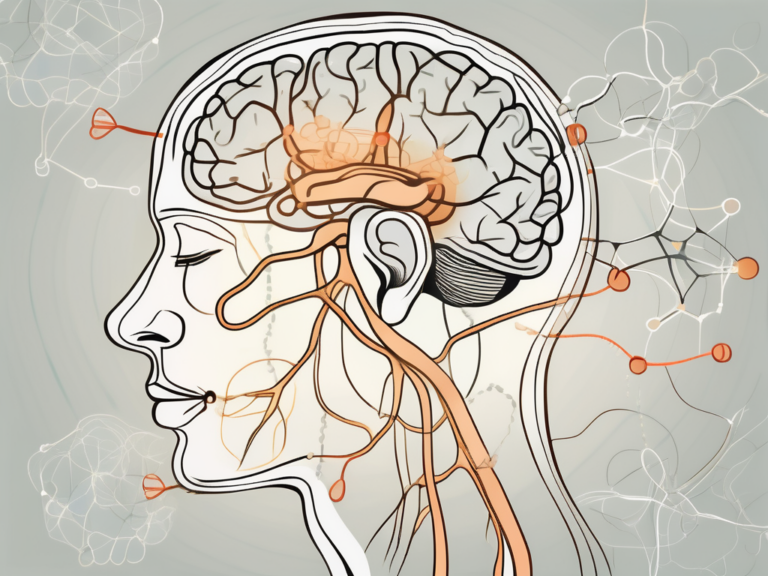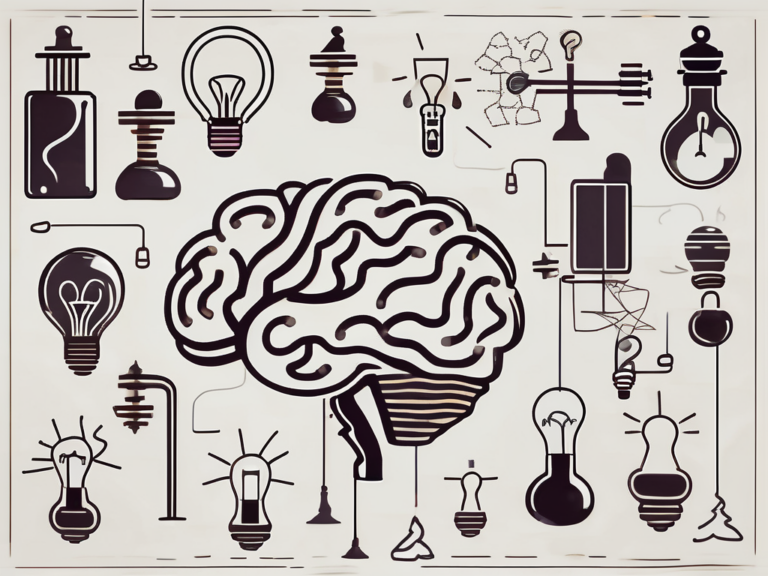What Is a Feedback Loop?
In the world of systems, feedback loops play a crucial role in maintaining stability and promoting change. Understanding the concept of a feedback loop is essential for anyone involved in decision-making processes. This article explores the different aspects of feedback loops, their types, significance in systems, the process involved, their presence in technology, impact, and strategies for improvement.
Understanding the Concept of a Feedback Loop
In simple terms, a feedback loop refers to a process in which the outputs of a system are fed back as inputs, creating a loop of information flow. Feedback loops are widely observed in various domains, including biology, social sciences, and technology. By analyzing the information received, a system can adjust its behavior to maintain stability or drive change.
The Basic Definition of a Feedback Loop
At its core, a feedback loop involves four essential components: a system, input, process, and output. The system receives input, processes it, and produces output. This output is then fed back into the system as input, creating a circular flow of information.
The Importance of Feedback Loops
Feedback loops are critical for the functioning and adaptation of systems. They enable systems to self-regulate, maintain balance, and respond to changes in their environment. By continuously monitoring and adjusting their behavior, systems can achieve stability, efficiency, and resilience.
Let’s take a closer look at an example to better understand the significance of feedback loops. Imagine a thermostat in your home. The thermostat acts as a system, receiving input in the form of the desired temperature you set. The process involves the thermostat comparing the current temperature in your home to the desired temperature. Based on this comparison, the thermostat produces an output, which is to either turn on or off the heating or cooling system.
Now, here’s where the feedback loop comes into play. The output generated by the thermostat, whether it’s turning on or off the heating or cooling system, is fed back into the system as input. This creates a continuous loop of information flow. As the system continues to receive input about the current temperature, it can adjust its behavior accordingly to maintain the desired temperature.
Feedback loops are not limited to simple systems like thermostats. They are also present in complex systems like ecosystems. In an ecosystem, various organisms interact with each other and their environment, creating a complex web of feedback loops. For example, if there is an increase in the population of a particular species, it can lead to a decrease in the population of its prey. This decrease in prey population then affects the predator’s population, creating a feedback loop that influences the entire ecosystem.
Understanding feedback loops is crucial for scientists, engineers, and policymakers as they design and manage systems. By recognizing the presence of feedback loops, they can make informed decisions to optimize system performance, prevent undesirable outcomes, and promote sustainability.
Different Types of Feedback Loops
Feedback loops are an essential concept in understanding the dynamics of systems. They play a crucial role in maintaining equilibrium and driving changes within a system. There are two primary types of feedback loops: positive feedback loops and negative feedback loops. Let’s delve deeper into each type to gain a comprehensive understanding.
Positive Feedback Loops
In a positive feedback loop, the output of a system reinforces or amplifies the initial input. This creates a self-reinforcing cycle that leads to an exponential increase or decrease in the system’s behavior. Picture a snowball rolling down a hill, growing larger and faster with each revolution. Positive feedback loops can have a profound impact on a system, often driving it towards extremes.
One example of a positive feedback loop is found in the Earth’s climate system. As global temperatures rise, the polar ice caps begin to melt. This reduction in ice cover decreases the Earth’s albedo, or reflectivity, causing more sunlight to be absorbed by the planet’s surface. This, in turn, leads to further warming, accelerating the melting of ice and perpetuating the cycle. Positive feedback loops can trigger rapid and drastic changes, potentially disrupting the stability of a system.
Negative Feedback Loops
In contrast to positive feedback loops, negative feedback loops work to maintain equilibrium within a system. In a negative feedback loop, the output of the system counters or dampens the initial input, leading to stabilization. Think of it as a thermostat in your home. When the temperature rises above a set point, the air conditioning kicks in, cooling the room and bringing the temperature back to the desired level.
Negative feedback loops are crucial for the regulation and stability of systems. They act as a control mechanism, ensuring that the system does not spiral out of control. An excellent example of a negative feedback loop can be observed in the human body’s regulation of blood sugar levels. When blood sugar levels rise after a meal, the pancreas releases insulin, which facilitates the uptake of glucose by cells, lowering blood sugar levels. Conversely, when blood sugar levels drop, the pancreas releases glucagon, which stimulates the liver to release stored glucose, raising blood sugar levels. This delicate interplay helps maintain the body’s blood sugar within a narrow range.
Understanding the characteristics and implications of positive and negative feedback loops is essential in various fields, including biology, ecology, economics, and engineering. By recognizing the role of feedback loops, we can better comprehend the behavior and dynamics of complex systems, paving the way for improved decision-making and problem-solving.
The Role of Feedback Loops in Systems
Feedback loops are pervasive and influential in various systems, including biological and social systems. Understanding their role in different domains can provide insights into complex behaviors.
Feedback Loops in Biological Systems
Biological systems heavily rely on feedback loops to maintain homeostasis and adapt to changing conditions. Negative feedback loops help regulate body temperature, blood sugar levels, and hormone production. For example, when body temperature rises above the set point, the hypothalamus sends signals to activate sweat glands and dilate blood vessels, allowing heat to dissipate and bring the temperature back to normal. On the other hand, positive feedback loops, although less common in biological systems, are involved in processes like childbirth. During labor, contractions stimulate the release of oxytocin, which in turn increases the intensity and frequency of contractions, leading to the eventual birth of the baby.
Furthermore, feedback loops in biological systems extend beyond the individual organism. They also play a crucial role in ecological systems. For instance, predator-prey relationships often involve feedback loops. As the predator population increases, it puts pressure on the prey population, leading to a decrease in prey numbers. This, in turn, reduces the food supply for predators, causing their population to decline. As the predator population decreases, the prey population can recover, initiating the cycle once again.
Feedback Loops in Social Systems
Social systems, such as economies and communities, also exhibit feedback loops. Economic feedback loops can be observed in supply and demand dynamics, where price changes drive consumer behavior. When the price of a product increases, consumers tend to demand less of it, leading to a decrease in demand. As a result, the price may decrease to stimulate demand again. This continuous interplay between supply and demand creates a feedback loop that influences market dynamics.
Similarly, social feedback loops operate through mechanisms like reputation and social norms, influencing individual and group behavior. Reputation feedback loops can be seen in online platforms, where positive reviews and ratings encourage more people to engage with a particular product or service, further enhancing its reputation. Social norms, on the other hand, are reinforced through feedback loops. When individuals conform to social norms, they receive positive feedback from their peers, which strengthens the adherence to those norms within the community.
It is important to recognize that feedback loops in social systems can have both positive and negative consequences. While positive feedback loops can amplify beneficial behaviors and lead to positive outcomes, they can also perpetuate harmful behaviors and create negative outcomes. Understanding the intricacies of these feedback loops is crucial for designing effective interventions and promoting desirable behaviors within social systems.
The Process of a Feedback Loop
Feedback loops involve a series of steps that contribute to their functionality. By understanding this process, we can better comprehend how feedback influences decision-making and system behavior.
The Steps Involved in a Feedback Loop
The feedback loop process typically consists of four fundamental steps: sensing, processing, decision-making, and action. Sensing involves gathering information about the system and its environment. This step is like a detective gathering clues to solve a mystery. It requires keen observation and the use of various sensors or instruments to collect data. Whether it’s measuring temperature, monitoring air quality, or tracking customer behavior, sensing provides the necessary input to understand the current state of the system.
Processing involves interpreting and analyzing the information received. Just like a brilliant detective analyzing evidence, this step requires careful examination and consideration of all the available data. It involves applying algorithms, statistical models, or other analytical techniques to make sense of the information. By identifying patterns, trends, and anomalies, processing helps uncover insights and hidden relationships that may not be immediately apparent.
Decision-making entails using the analyzed information to determine the appropriate response. Imagine the detective, armed with all the evidence and insights, making a critical decision to solve the case. In the feedback loop, decision-making involves using the processed information to evaluate the current state of the system and compare it to desired outcomes. It requires weighing different options, considering potential risks and benefits, and selecting the most suitable course of action.
Finally, action involves implementing the chosen response, which feeds back into the system as input. This step is like the detective taking action based on their decision. It involves executing changes, adjusting parameters, or implementing strategies to influence the system’s behavior. By taking action, the system responds to the feedback it has received, initiating a new cycle of sensing, processing, decision-making, and action.
The Role of Feedback in Decision-Making
Feedback plays a crucial role in decision-making by providing valuable information about the consequences of actions and the effectiveness of strategies. It enables systems to adjust their behavior based on the feedback received, contributing to learning and improvement. Just like a detective learning from their previous cases, feedback allows systems to adapt and optimize their performance over time.
Moreover, feedback helps in identifying and correcting errors or deviations from desired outcomes. It acts as a compass, guiding decision-makers towards the right path. By continuously monitoring the system’s response to actions, feedback allows for real-time adjustments and fine-tuning. It ensures that decisions are not made in isolation but are informed by the ongoing feedback received from the system.
In summary, the process of a feedback loop involves sensing, processing, decision-making, and action. Each step is integral to the overall functionality of the loop, contributing to effective decision-making and system behavior. Feedback, with its invaluable insights and corrective nature, plays a vital role in this process, enabling systems to learn, adapt, and continuously improve.
Feedback Loops in Technology
In the realm of technology, feedback loops are integral to various fields, facilitating advancements and optimizing performance. Feedback loops are not just limited to one or two areas; they are pervasive and impactful across a wide range of technological domains.
One area where feedback loops are particularly prominent is machine learning. Machine learning relies heavily on feedback loops to train algorithms and improve their predictive capabilities. By providing feedback on the accuracy of predictions, models can be refined and adapted to achieve better results over time. This iterative process allows machine learning algorithms to continuously learn and evolve, making them more efficient and effective in solving complex problems.
But it’s not just machine learning that benefits from feedback loops. Feedback loops also play a critical role in software development practices such as Agile and DevOps. Continuous feedback from users, stakeholders, and testing helps identify and address issues, refine features, and deliver better software products. By incorporating feedback loops into the development process, software teams can iterate quickly, respond to changing requirements, and ensure that the final product meets the needs and expectations of its users.
Moreover, feedback loops extend beyond the realm of technology itself. They also exist in the interactions between humans and technology. For example, in user experience design, feedback loops are used to gather insights on how users interact with a product or interface. This feedback is then used to make informed design decisions and improve the overall user experience. By understanding user behavior and preferences through feedback loops, designers can create more intuitive and user-friendly interfaces that enhance the usability and satisfaction of technology.
Furthermore, feedback loops are not limited to the development and improvement of technology alone. They also play a crucial role in the maintenance and support of technological systems. Through feedback loops, system administrators can gather information about system performance, identify bottlenecks or issues, and make necessary adjustments to optimize the system’s efficiency and reliability. This continuous feedback loop ensures that technology remains up-to-date, secure, and capable of meeting the demands of its users.
In conclusion, feedback loops are a fundamental aspect of technology, enabling continuous improvement, adaptation, and optimization. Whether in machine learning, software development, user experience design, or system maintenance, feedback loops empower technological advancements and ensure that technology remains responsive to the needs and expectations of its users.
The Impact of Feedback Loops
Effective feedback loops can have significant positive impacts on systems, while ineffective or absent feedback can lead to problems and challenges.
The Benefits of Effective Feedback Loops
Effective feedback loops contribute to improved performance, enhanced learning, and innovation. They enable systems to adapt to changing circumstances, identify and correct errors, and optimize processes. Well-designed feedback loops can foster collaboration and engagement, leading to better outcomes for individuals and organizations.
For example, in the field of education, feedback loops play a crucial role in student learning. When teachers provide timely and constructive feedback to their students, it helps them understand their strengths and areas for improvement. This feedback allows students to make necessary adjustments to their learning strategies, leading to better academic performance and a deeper understanding of the subject matter.
In addition, effective feedback loops are essential in the realm of product development. By gathering feedback from customers, companies can identify areas where their products can be improved or modified to better meet customer needs. This iterative process of feedback and refinement leads to the creation of products that are more user-friendly, innovative, and competitive in the market.
The Risks of Ineffective Feedback Loops
Ineffective feedback loops can hinder progress, prevent learning, and create suboptimal outcomes. Inadequate feedback can lead to misunderstandings, limited visibility, and the perpetuation of ineffective practices. It is crucial to establish clear communication channels and mechanisms for gathering and utilizing feedback.
For instance, in a workplace setting, the absence of effective feedback loops can result in decreased employee morale and productivity. When employees do not receive regular feedback on their performance, they may feel undervalued and uncertain about their work. This lack of feedback can lead to a decline in motivation and a disengagement from their responsibilities, ultimately impacting the overall success of the organization.
Furthermore, in the realm of healthcare, ineffective feedback loops can have serious consequences. When healthcare providers fail to receive feedback from patients and colleagues, it can impede their ability to identify and address medical errors or gaps in care. This lack of feedback can compromise patient safety and quality of care, highlighting the importance of robust feedback mechanisms in the healthcare system.
Improving Feedback Loops
To optimize feedback loops and harness their full potential, organizations and individuals can adopt specific strategies and overcome common challenges.
Strategies for Enhancing Feedback Loops
Implementing real-time feedback mechanisms, fostering a culture of open and constructive feedback, and leveraging technology can enhance the effectiveness of feedback loops. Providing clear guidelines for feedback and actively seeking diverse perspectives can also contribute to better decision-making and outcomes.
Overcoming Challenges in Feedback Loops
Challenges such as bias, resistance to feedback, and information overload can hinder the effectiveness of feedback loops. By addressing these challenges through training, transparency, and creating a supportive environment, organizations and individuals can overcome barriers and improve the feedback loop process.
In Conclusion
Feedback loops are fundamental to the functioning and adaptation of systems in various domains. Understanding their concept, types, role, and process can enhance decision-making, promote stability, and drive positive change. By continuously improving feedback loops and overcoming challenges, organizations and individuals can harness their power to achieve better outcomes and thrive in a dynamic world.






